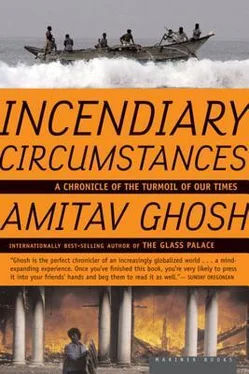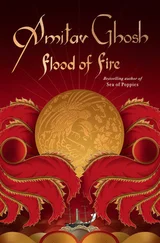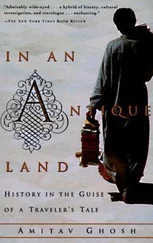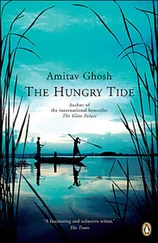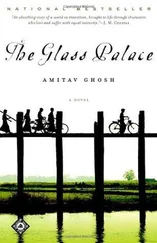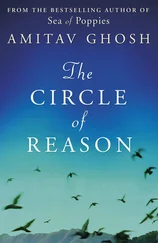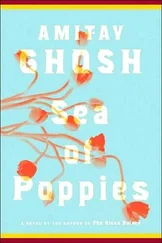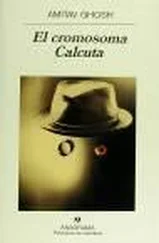5
Everywhere he went on his tour of France, King Sisowath was accompanied by his palace minister, an official who bore the simple name of Thiounn (pronounced Chunn). For all his Francophilia, King Sisowath spoke no French, and it was Minister Thiounn who served as his interpreter.
Minister Thiounn was widely acknowledged to be one of the most remarkable men in Cambodia; his career was without precedent in the aristocratic, rigidly hierarchical world of Cambodian officialdom. Starting as an interpreter for the French, at the age of nineteen, he had overcome the twin disadvantages of modest birth and a mixed Khmer-Vietnamese ancestry to become the most powerful official at the court of Phnom Penh: the minister simultaneously of finance, fine arts, and palace affairs.
This spectacular rise owed a great deal to the French, to whom he had been of considerable assistance in their decades-long struggle with Cambodia's ruling family. His role had earned him the bitter contempt of certain members of the royal family, and a famous prince had even denounced the "boy interpreter" as a French collaborator. But with French dominance in Cambodia already assured, there was little that any Cambodian prince could do to check the growing influence of Minister Thiounn. Norodom Sihanouk, King Sisowath's great-nephew, spent several of his early years on the throne smarting under Minister Thiounn's tutelage: he was to describe him later as a "veritable little king," "as powerful as the French résidents-supérieurs of the period."
The trip to France was to become something of a personal triumph for Minister Thiounn, earning him compliments from a number of French ministers and politicians. But it also served a more practical function, for traveling on the Amiral-Kersaint, along with the dancers and the rest of the royal entourage, was the minister's son, Thiounn Hol. In the course of his stay in France, the minister succeeded in entering him as a student in the École Coloniale. He was the only Cambodian commoner to be accepted; the other three were all princes of the royal family.
Not unpredictably, the minister's son proved to be a far better student than the princelings and went on to become the first Cambodian to earn university qualifications in France. Later, the minister's grandsons too, scions of what was by then the second most powerful family in Cambodia, were to make the journey to France.
One of those grandsons, Thiounn Mumm, earned considerable distinction as a student in Paris, acquiring a doctorate in applied science and becoming the first Cambodian to graduate from the exalted École Polytechnique. In the process he also became a central figure within the small circle of Cambodians in France. The story goes that he made a point of befriending every student from his country and even went to the airport to receive newcomers.
Thiounn Mumm was, in other words, part mentor, part older brother, and part leader, a figure immediately recognizable to anyone who has ever inhabited the turbulent limbo of the Asian or African student in Europe — that curious circumstance of social dislocation and emotional turmoil that for more than a century now has provided the site for some of the globe's most explosive political encounters. The peculiar conditions of that situation, part exile and part a process of accession to power, have allowed many strong and gifted personalities to have a powerful impact on their countries through their influence on their student contemporaries. Thiounn Mumm's was thus a role with a long colonial genealogy. And he brought to it an authority beyond that of his own talents and forceful personality, for he was also a member of a political dynasty — the Cambodian equivalent of the Nehrus or the Bhuttos.
Among Thiounn Mumm's many protégés was the young Pol Pot, then still known as Saloth Sar. It is generally believed that it was Thiounn Mumm who was responsible for his induction into the French Communist Party in 1952. Those Parisian loyalties have proved unshakeable: Thiounn Mumm and two of his brothers have been members of Pol Pot's innermost clique ever since.
That this ultraradical clique should be so intimately linked with the palace and with colonial officialdom is not particularly a matter of surprise in Cambodia. "Revolutions and coups d'état always start in the courtyards of the palace," a well-known political figure in Phnom Penh told me. "It's the people within who realize that the king is ordinary, while everyone else takes him for a god."
I heard the matter stated even more bluntly by someone whose family had once known the Thiounns well. "Ever since their grandfather's time," he said, "they wanted to be king."
Be that as it may, it is certainly possible that the Thiounns, with their peculiarly ambiguous relationship with the Cambodian monarchy, were responsible, as the historian Ben Kiernan has suggested, for the powerful strain of "national and racial grandiosity" in the ideology of Pol Pot's clique. That strain has eventually proved dominant: the Khmer Rouge's program now consists largely of an undisguisedly racist nationalism whose principal targets, for the time being, are Vietnam and Cambodia's own Vietnamese minority.
A recent defector, describing his political training with the Khmer Rouge, told UN officials that "as far as the Vietnamese are concerned, whenever we meet them we must kill them, whether they are militaries or civilians, because they are not ordinary civilians but soldiers disguised as civilians. We must kill them, whether they are men, women, or children, there is no distinction, they are enemies. Children are not militaries but if they are born or grow up in Cambodia, when they will be adult, they will consider Cambodian land as theirs. So we make no distinction. As to women, they give birth to Vietnamese children."
Later, shortly before the elections, there was a sudden enlargement of the Khmer Rouge's racist vocabulary. No matter that its own guerrillas had been trained by British military units in the not-so-distant past, it began inciting violence against "white-skinned, point-nosed UNTAC soldiers."
6
The more I learned of Pol Pot's journey to France, and of the other journeys that had preceded it, the more curious I became about his origins. One day, late in January, I decided to go looking for his ancestral village in the province of Kompong Thom.
Kompong Thom has great military importance, for it straddles the vital middle section of Cambodia; the town of the same name lies at the strategic heart of the country. It is very small: a string of houses that grows suddenly into a bullet-riddled marketplace, a school, a hospital, a few roads that extend all of a hundred yards, a bridge across the Sen River, a tall, freshly painted wat, a few outcrops of blue-signposted UNTAC land, and then the countryside again, flat and dusty, clumps of palms leaning raggedly over the earth, fading into the horizon in a dull gray-green patina, like mold upon a copper tray.
Two of the country's most important roadways intersect to the north of the little town. One of them leads directly to Thailand and has long been one of the most hotly contested highways in Cambodia, for the Khmer Rouge controls large chunks of territory on either side of it. The State troops who are posted along the road are under constant pressure, and there are daily exchanges of shells and gunfire.
The point where the two roads meet is guarded by an old army encampment, now controlled by the State. A tract of heavily mined ground runs along its outer perimeter; the minefield is reputed to have been laid by the State itself, partly to keep the Khmer Rouge out, but also to keep its own none-too-willing soldiers in.
Here, in this strategic hub, this center of centers, looking for Pol Pot's ancestral home, inevitably I came across someone from mine. He was a Bangladeshi sergeant, a large, friendly man with a bushy mustache. We had an ancestral district in common in Bangladesh, and the unexpectedness of this discovery — at the edge of a Cambodian minefield — linked us immediately in a ridiculously intimate kind of bonhomie.
Читать дальше
